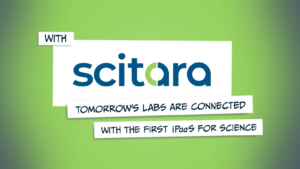Redefining Connectivity
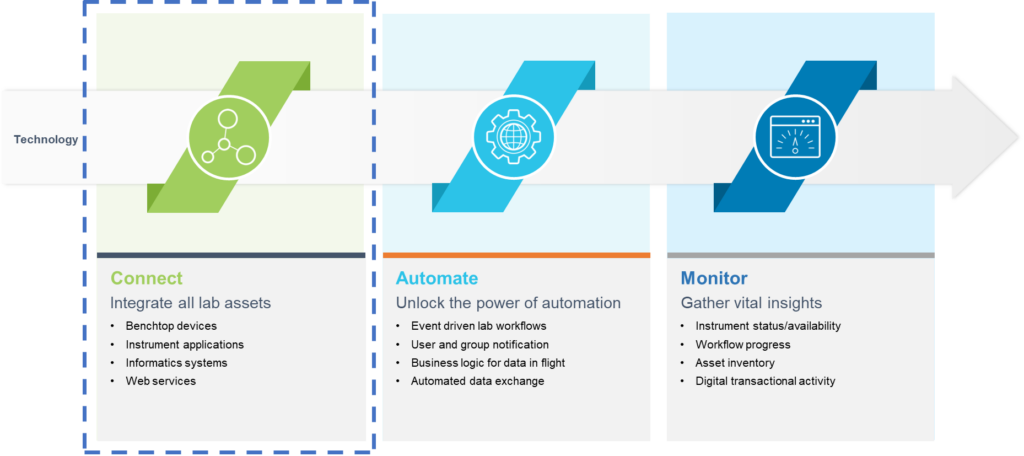
Imagine you’re sitting in front of a puzzle. Scattered around you are individual pieces, each unique in both design and significance. Although each piece may stand on its own, you wish to bring them together to see how each individual piece supports the other. As each piece is added to the structure, a larger picture begins to reveal itself. Ultimately, as you set that last piece into place, you reveal the complete image that was waiting to be discovered.
That’s what Scitara is all about—facilitating lab instrument integration and connectivity that goes beyond the typical boundaries of our technological era and unlocks the full potential of the laboratory ecosystem. Scitara is a global provider of laboratory-specific, cloud-based software solutions for life science and other science-based industries. We recognize not only the power of collaboration but how digital integration, if done properly, drives a seamless flow of data throughout a lab and beyond, ensuring lab data integrity. In support of this vision and as part of the Scitara Digital Lab Exchange iPaaS platform, Scitara has developed a portfolio of Connection Technologies.
So, what is a Connector? Simply put, a Connector is a digital tool for connecting an application, service, or instrument to the Scitara DLX™ iPaaS platform infrastructure, and subsequently, to the rest of the laboratory. But that’s just the textbook definition. More importantly, Scitara Connectors, and our connector technology in general, are a crucial component to creating a bridge of connectivity within the lab and across diverse technologies.
Coming Together
Scitara DLX Connection technologies serve as the foundation that connects various devices, systems, and applications to a common infrastructure, in and outside the lab. It is through our DLX Connector technology that we commit to “no instrument or application left behind, thus maintaining lab data integrity.”[1] You might argue that connectivity by itself may have its limits, with various obstacles and hurdles to cross as we live in a world full of evolutionary technologies. Let’s explore how Scitara DLX overcomes those challenges to provide holistic connectivity and data mobility across the lab ecosystem and beyond.
The Scitara DLX infrastructure provides you with the following connection capabilities:
- Multiple connection technologies supporting legacy and modern instruments.
- Branded and Universal Connection technologies to cover the diverse range of lab-connected endpoints.
- Hundreds of instruments and applications supported through flexible configuration tools.
- Configurable combability to add new devices and applications.
From benchtop instruments that use serial device RS-232 to PC-based instruments that are Windows File System based or API driven, or web-based platforms like LIMS or ELN, we’re dedicated to building bridges across all these technologies worlds come together in a central infrastructure of communication, automation, and simplification. Using Scitara DLX Connectors, integration is accomplished in a straightforward, logical way.
Reducing Workflow Complexity
In the science-based industries, lab integration is often very challenging. That’s why Scitara DLX Connectors are all configurable and off the shelf. By offering configurable, documented functionality, Connectors simplify the setup process and enable users to quickly establish lab ecosystem connections without advanced technical expertise. This removes the complexities of integrating disparate technologies. With consistent and documented configuration and instantiation processes, we have created a standardized solution to connect various devices, applications, and services, resulting in the elimination of custom solutions.
Connecting your Lab Ecosystem Regardless of the Device
The three most common types of lab assets are benchtop devices (such as balances, pH meters etc.), PC-based instruments (such as stand-alone analyzers as well as enterprise systems such as CDS), and web-based platforms such as LIMS and ELNs). Typically, benchtop devices communicate via RS-232, PC-based instruments communicate through APIs or by extracting files, while web-based platforms communicate using webservice APIs. In a typical lab, it may seem impossible to connect all these diverse systems using their different communication methods. With Scitara DLX, the impossible is made possible.
Handling Different Communication Technologies
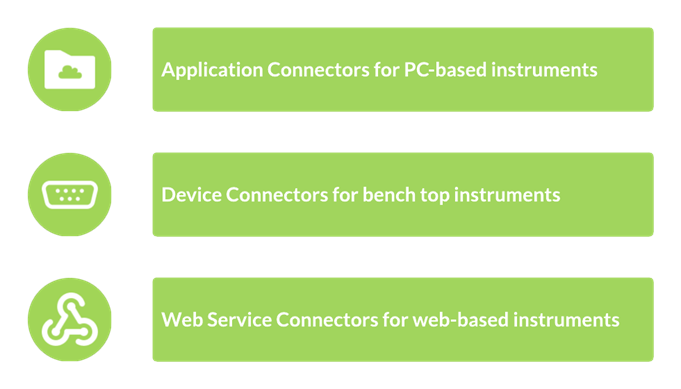
Application Connectors support multi-directional data mobility from PC-based lab instruments either through APIs (Branded Connectors), or by extracting files through our Universal Windows File Connector. For PC-based applications that use APIs, we collaborate with leading vendors, to create a portfolio of “branded” Connectors. These branded Application Connectors are designed to establish a seamless connection between our platform and popular PC-based lab applications. Through these Application Connectors, users can enjoy the benefits of a unified and cohesive workflows, eliminating the need for tedious manual data transfers between applications.
However, not all PC-based applications offer publicly accessible APIs. To address this limitation and ensure compatibility with a broader spectrum of applications we developed Universal Application Connectors. We designed these Connectors to bridge the gap that non-API based applications tend to create. The Scitara PC based Universal connector portfolio includes the Windows File connector, A One Drive Connector, an S3 Connector and OPC UA and DA connectors. All of these are configurable to support connectivity to a wide variety of PC based instrumentation where an API is not available.
Device Connectors support benchtop instruments that are typically not connected to PC’s but do have RS 232 support. Device Connectors by definition are universal and connect non-PC-based instruments that support RS232 communication protocol. Our Serial Device Connector operates seamlessly with network protocol converters commonly found in the lab already, enabling smooth management and communication through the DLX Platform to any lab application. Scitara’s Serial Device Connector supports a wide range of RS 232 based lab instruments, such as pH meters, balances, and other devices. Now, even non-PC-based lab tools can easily participate in DLX workflows, creating a fully digital lab.
Webservice Connectors support connectivity to web-based platforms, such as ELN’s, LIMS or any web-based application. Branded Webservice Connectors are designed for specific partners and are pre-configured with built-in configuration designed to simplify deployment and operation, minimizing the need for detailed API or application knowledge.
Universal Webservice Connectors are designed to support any web-based application, regardless of the brand. that adheres to industry standard web service protocols. While they may require more initial configuration compared to branded Connectors, they offer the advantage of being highly versatile and adaptable.
Branded Connectors Branded Connectors offer the following attributes:
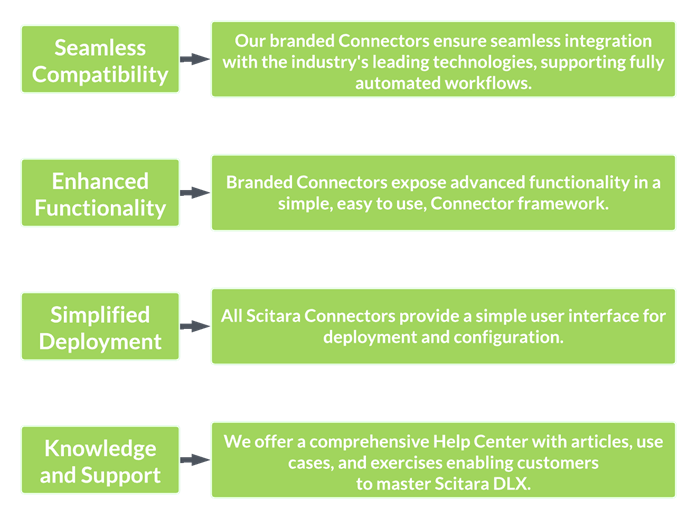
Universal Connectors
Universal Connectors offer the following attributes:
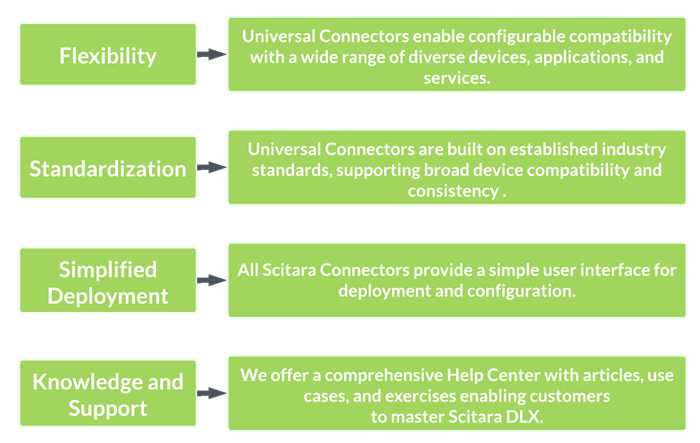
Summary
One of the greatest challenges any lab environment faces is how to integrate the wide diversity of equipment. Scitara DLX bridges that gap by offering an infrastructure-based solution with a wide range of Connection technologies, creating the lab of the future. Regardless of the instruments or applications used, Scitara DLX offers connectivity to seamlessly connect and mobilize data, enabling users to access and analyze information effortlessly.
As powerful as Scitara DLX connection technologies are, they are only part of the overall solution. The ability to automate workflows is critical to digital transformation in the lab. Check out our blog on Scitara DLX Orchestrations to see how Scitara DLX leverages the connectivity technologies described here to provide multi-directional data mobility across the entire lab ecosystem.
Contact us today to schedule a demo of Scitara DLX or to learn more about why Scitara DLX is the superior choice for automating laboratory workflows with unmatched compatibility, cutting-edge performance, and unwavering reliability.
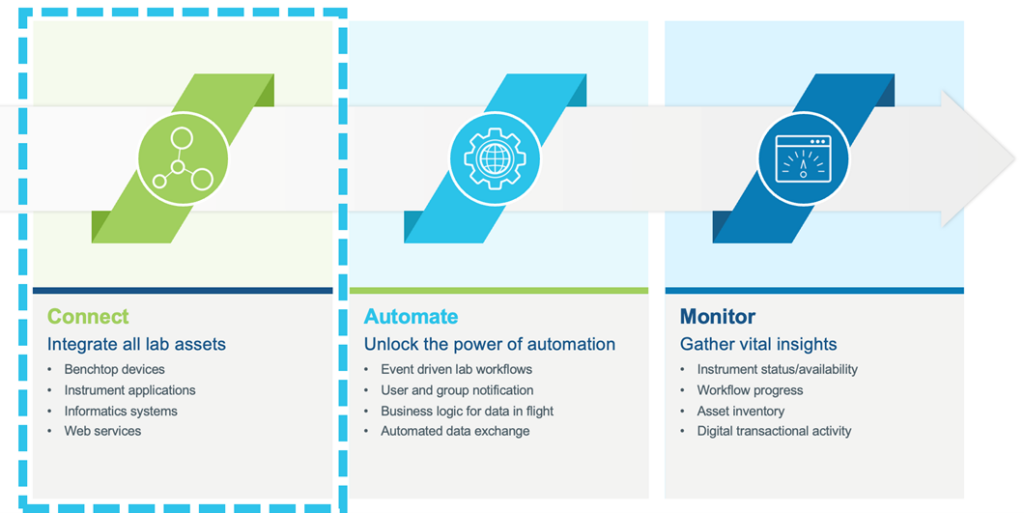
Footnotes:
